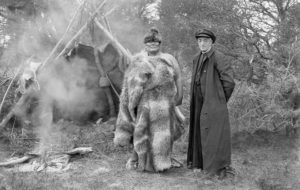Father De Agostini’s Legacy
May 8, 2017 - 2 minutes readDuring all of their voyages through the islands at the bottom end of Patagonia, the Australis expedition ships pass through Alberto de Agostini National Park. Sprawling across numerous islands and more than 5,600 square miles of wilderness, the park is larger than Yellowstone and Yosemite combined, and justly famous for its dramatic landscapes and copious wildlife.
What isn’t so well known by those who travel the region is the origin of the park’s distinctly Italian name.
True to the Renaissance roots of his homeland, Alberto de Agostini took on many different roles during his lifetime, that stretched from 1883 to 1960, including explorer and mountain climber, ethnographer and museum curator, writer and photographer, linguist, anthropologist, defender of indigenous peoples, and Roman Catholic priest who first came to Patagonia as a missionary of the Salesian Order.
While growing up in the rugged Piedmont region of northern Italy, de Agostini spent much of his spare time climbing and trekking across ice fields in the Italian Alps. In 1910, after his ordination as a young priest, the Salesians sent him to remote southern Chile on a mission to serve the spiritual needs of the indigenous inhabitants.
Rather than viewing Patagonia a desolate outpost at the end of the earth, de Agostini was immediately enchanted with his new surroundings. And soon he was scrambling up mountains and across glaciers again, wide-ranging and ambitious explorations that would eventually take him all over Patagonia during the half century he spent in the region. Along the way he took photos, made documentary films and wrote 22 books about Patagonia’s flora, fauna, geology, history and native peoples.
De Agostini also took it upon himself to name many of the region’s geographical landmarks — places like Garibaldi Glacier (after the politician who founded modern Italy) and Pia Glacier (after Princess Maria Pia of Savoy).
Read more about Alberto de Agostini National Park in the new National Geographic book Wild Beautiful Places, available on the National Geographic website and at Amazon.com Books.
0 Comments